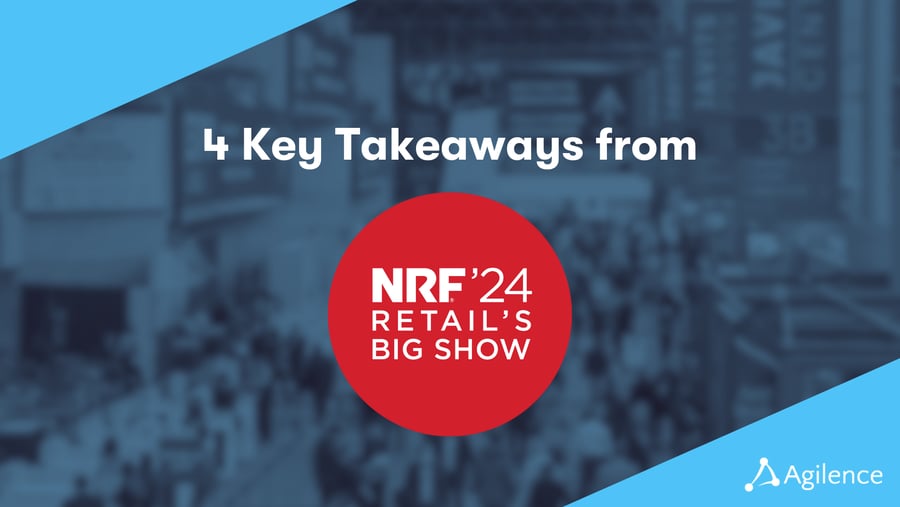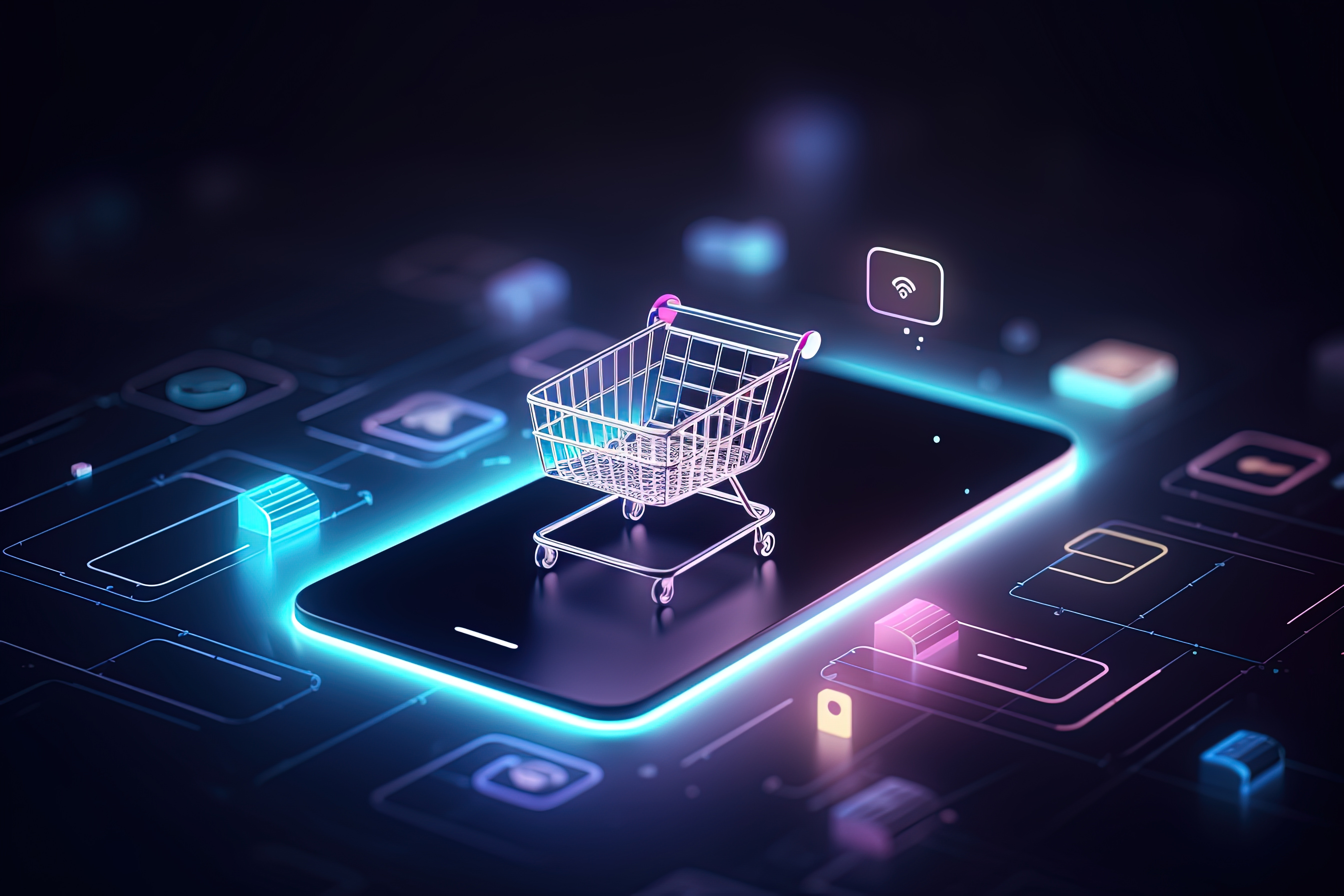4 Key Takeaways from NRF Big Show 2024
Retail General
Every year, the National Retail Federation's Big Show serves as the grand stage for unveiling the latest trends, technologies, and strategies that are set to shape the retail industry. The NRF Big Show 2024 in New York was no exception. As the largest retail event of the year, it drew thousands of industry professionals from around the globe, all eager to share insights, learn from peers, and explore innovative solutions to common challenges.
This year's event covered a variety of topics, but unsurprisingly, artificial intelligence (AI) stood out as the dominant theme. However, discussions around IoT and automation, the changing landscape of retail crime post-COVID, and the impact of weather on retail operations are just a few that caught our eye. In this article, we delve into four key takeaways from NRF Big Show 2024, offering a glimpse into the future of retail and how businesses can navigate the ever-changing landscape.
1. Artificial Intelligence Dominated Discussions
As expected, artificial intelligence was undeniably the star of the show at NRF Big Show 2024. It dominated discussions, with a staggering 20% of all sessions mentioning it in their titles alone and many more delving into its depths. While not a new topic at NRF Big Show, the buzzword that has been on everyone's lips for years took center stage this year, reflecting a renewed optimism in the retail industry about the potential of AI. Executives from e.l.f. Beauty, Tractor Supply, Saks, and other retailers explained how they’re already using AI at the conference. Thanks to advancements such as Open AI’s ChatGPT and other products, Generative AI in particular was a main focus.
Retailers have a voracious appetite for AI, seeing it as a co-pilot, an assistant, or a sidekick to their operations. The narrative of AI in 2023 was filled with blue-sky possibilities, but 2024 is shaping up to be the year where retailers are fine-tuning a more succinct list of core use cases for AI. Products and use cases ran the gamut across retail organizations, including functions such as demand forecasting, video analytics, robotic automation, inventory management and supply chain, e-commerce shopping cart sales optimization, customer experience, loss prevention and more. It seemed like virtually every software offering was touting its AI capabilities.
The consensus was clear: AI is no longer just a futuristic concept but a present-day game-changer in retail. Here at Agilence we recently announced new AI functionality for our Agilence Analytics and Case Management products coming soon. Case Management will include a new Case Linking feature, which leverages machine learning (ML) algorithms to uncover correlations between incidents. Users will be able to view connected cases based on any user-defined criteria such as suspect name, vehicle model, case type, method, incident description/narrative, and more.
While many are throwing AI around as a buzzword, Agilence’s new AI-enabled features use proven machine learning models and techniques to solve specific use cases for loss prevention and operations. To learn more about the technical details of our AI functionality, schedule a demo to learn more.
2. IoT and AI Streamlining Restaurant Operations
Each year, NRF Big Show has included a bigger presence for restaurants, and this year continued that trend. This takeaway is for the restaurants at the retail show (even though it also applies to retailers as well).
The restaurant industry is grappling with a significant labor shortage, leading to high staff turnover that negatively impacts customer satisfaction and profitability. One area particularly affected is cleanliness - a critical aspect of the customer experience. Chronic worker shortages make it challenging to maintain the necessary hygiene standards, affecting both customer experience and restaurant sales. In response, many companies are integrating automation into routine tasks to enhance efficiency. For instance, Internet of Things (IoT) sensors on soap dispensers and toilet paper holders streamline the refill process, enabling employees to respond only when alerted by the sensor.
This shift towards automated triggers over regular checklists extends beyond restroom maintenance, with AI and automation increasingly utilized across restaurants for food safety data collection, energy monitoring, machine maintenance, and more. Transitioning from scheduled paper checklists to event-driven sensor-driven alerts can significantly enhance efficiency. This approach not only saves time but also allows managers to concentrate on enhancing other areas, improving customer satisfaction. Automation addresses the labor problem by both improving employee time efficiency and job satisfaction by eliminating repetitive tasks.
Agilence Case Management and Store Audit are powerful tools that can significantly aid restaurants harnessing automation. They can automate tasks by creating cases from alerts triggered by issues or events, facilitating performance monitoring, identifying hardware problems, and managing follow-up tasks.
3. The Changing Landscape of Retail Crime Post-Pandemic
One noteworthy shift in the retail landscape is a change in the nature of retail crime since the COVID-19 pandemic. Previously, retail crime was primarily related to theft, with perpetrators taking products and attempting to evade store employees. However, post-COVID, there has been a disturbing shift towards more violent behaviors. Stores are now dealing with an increased threat to staff and customer safety and property damage.
The distribution of this trend and the response to it varies throughout the industry. Stores selling everyday goods in high-traffic urban locations are generally at higher risk than specialty retailers and those concentrated more in suburban shopping centers.
In some regions, retailers have started implementing drastic measures, like using tasers to subdue thieves. However, these measures are currently limited to specific areas and are generally implemented when other retailers in the area adopt similar tactics. Retailers are navigating a delicate balance - they don't want to be seen as overly aggressive, yet they also don't want to be perceived as the most lenient and become a target. Finding the right balance between ensuring safety and avoiding negative publicity is a complex challenge many retailers are facing.
Agilence Case Management is a powerful tool designed to help retailers respond effectively to the increased risk of violence and theft in their stores by allowing retailers to track and analyze incidents and identify patterns, enabling them to evolve their security measures as necessary. Store Audit is complementary, providing a preventative approach, helping retailers maintain high standards of store upkeep which can deter potential thieves.
4. Gauging the Impact of Weather on Retail Sales, Operations, and Loss Prevention
Each year at NRF Big Show, the impact of weather on retail sales is a hot topic of discussion. Retailers must anticipate how weather conditions like rain storms or snowstorms might affect their sales and supply chain needs.
Take grocery stores as an example. Traditionally, inclement weather tends to spike sales as customers stock up on essentials. One retailer shared that they double their dairy - milk, eggs, and cheese - supplies during a snowstorm. Interestingly, frozen meals, which were once popular pre-storm buys, have waned in popularity. This shift illustrates the importance of using weather forecasts to optimize supply chain management and ensure the right products are in-store.
On the loss prevention (LP) side, weather can also play a significant role. Are criminals likely to brave harsh weather conditions to steal from stores? The answer isn't straightforward. While some may be deterred by bad weather, others might see it as an opportunity, knowing that stores could be understaffed due to the weather.
The impact of weather varies significantly based on geographical location. For instance, an inch of snow in Dallas, Texas, can bring the city to a halt, while New Jersey is better equipped to handle such conditions. This difference impacts store operations, from staffing levels to inventory management, and even loss prevention efforts.
Retailers can use Case Management to better understand these correlations and then integrate them into audit preparation in Agilence Store Audit. By tracking weather changes and their effects, retailers can better prepare for storms, managing labor and inventory accordingly. There's no doubt that understanding the impact of weather on retailers can help them improve operations, boost sales, and better protect their stores.
Related Articles

AI Risks and How to Start Now with AI – AI in Retail Part 3
Since the release of OpenAI’s ChatGPT at the end of 2022, there’s been a big question on the mind of retail leaders: how will...7 Retail Trends for 2024
It’s a new year, which can only mean one thing: a forecast piece! As 2024 begins, retailers are entering an uncertain but ‘gu...
The New Retail Store Operations Checklist
It may seem like today’s daily store operations aren’t much different than they were 100 years ago. But with the increasing r...Subscribe to our blog
Receive free educational resources like exclusive reports, webinars, and industry thought leadership articles straight to your inbox.

